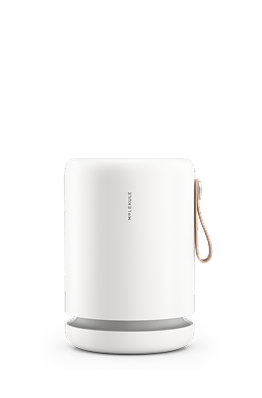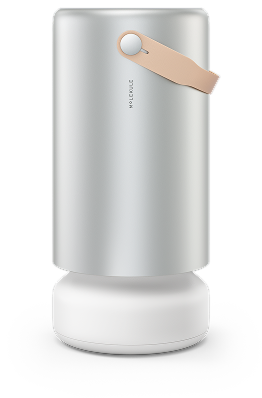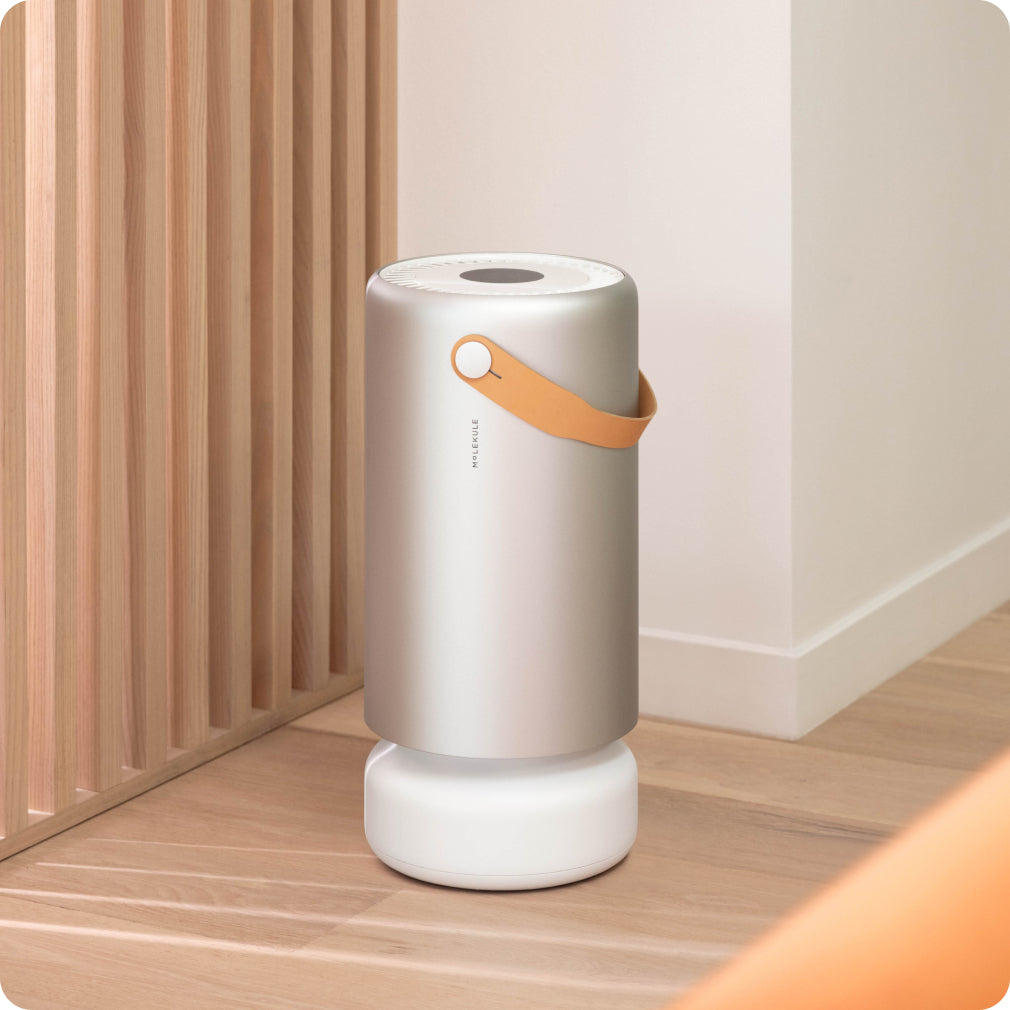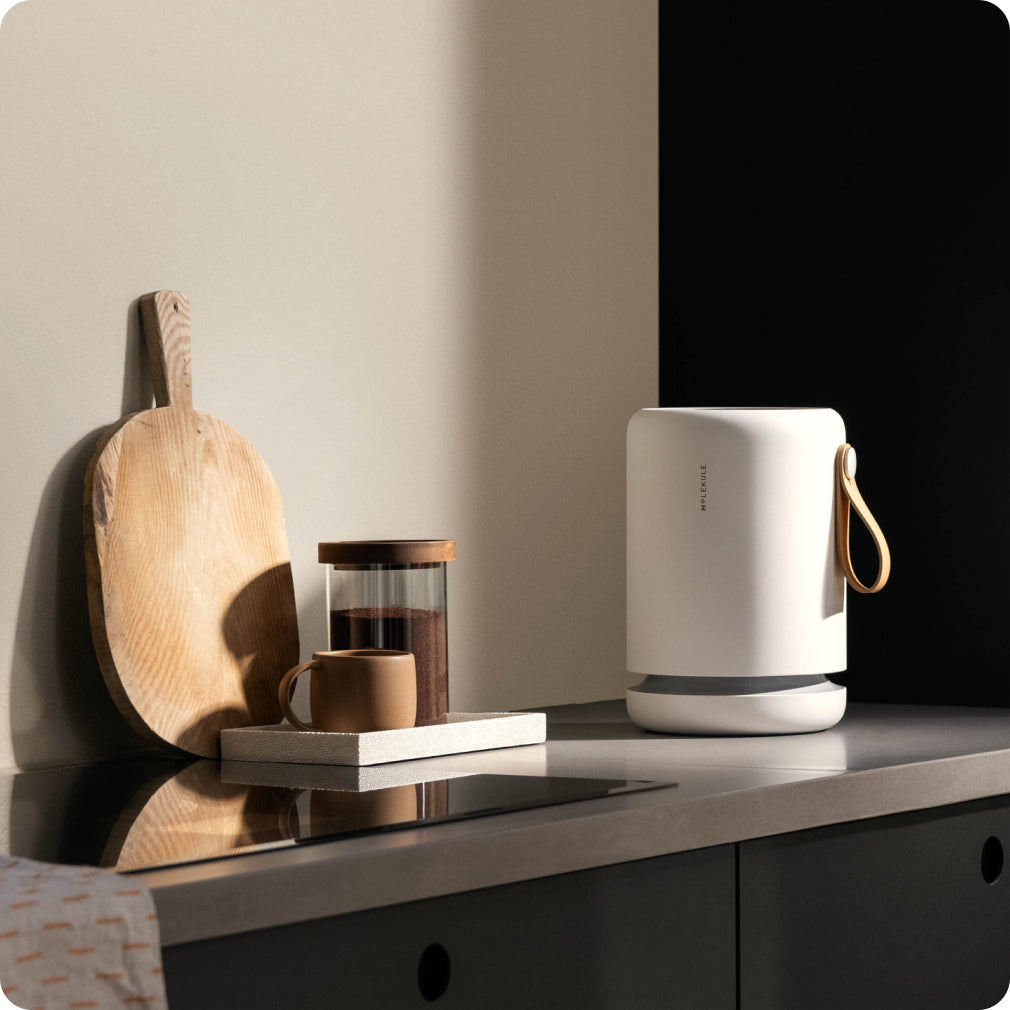If you’ve ever noticed dark spots on your bathroom ceiling or a musty smell in your basement, you may be dealing with mold. It’s not just unsightly: mold can trigger allergy-like symptoms such as sneezing, coughing, and watery eyes, and it can even damage your home if left untreated.
The good news is that most small mold problems can be handled at home with the right tools and techniques. By cleaning affected areas quickly, protecting yourself properly, and using air purification systems that destroy airborne spores, you can keep your home healthy and mold-free.
Key Takeaways
-
Act Quickly: Clean mold within 24-48 hours of moisture exposure to prevent extensive growth and structural damage.
-
Safety First: Always wear N95 respirators, goggles, and gloves; never mix bleach with ammonia or other cleaners.
-
Size Matters: DIY cleaning works for areas under 10 square feet; hire professionals for larger contamination.
-
Fix the Source: Address underlying moisture problems or mold will return regardless of cleaning efforts.
-
Airborne Protection: Use molecular destruction air purification during and after cleaning to eliminate mold spores.
Understanding Mold Growth
Mold is a type of fungus that thrives in damp, warm environments. It spreads through microscopic spores that travel through the air and settle on moist surfaces. Common places mold appears include bathrooms, kitchens, basements, window frames, and around sinks or leaky pipes.
While most household molds are not dangerous if you remove the mold quickly, certain types, such as black mold (Stachybotrys chartarum), can cause stronger allergic reactions and should be handled carefully or by professionals.
Safety First: Gear and Preparation
Before cleaning any mold, protect yourself and prevent the spores from spreading.
-
Wear protective gear: Use an N95 respirator or higher-grade mask, rubber gloves, long sleeves, and safety goggles.
-
Ventilate the space: Open windows and doors to increase airflow, but avoid using fans that can blow spores into other rooms.
-
Contain the area: Close interior doors and seal vents if possible.
-
Never mix chemicals: Combining bleach with ammonia, vinegar, or other cleaners can produce toxic fumes.
Step-by-Step: How to Clean Mold
1. Stop the Moisture Source
Before cleaning, find and fix the source of the moisture. This might mean repairing a leaky pipe, sealing window gaps, or improving ventilation in humid rooms. Without fixing the problem, mold will come back no matter how well you clean.
2. Clean Small Mold Spots
For hard, nonporous surfaces (like tile, glass, or metal):
-
Scrub the area with warm water and detergent.
-
Disinfect with a solution of 1 cup of bleach mixed with 1 gallon of water.
-
Let it sit for 10–15 minutes, then rinse and dry thoroughly.
For porous materials (like carpet, insulation, or drywall):
-
It’s usually best to remove and replace these materials. Once mold grows inside them, it can’t be fully cleaned out.
3. Dry the Area Completely
Use fans or a dehumidifier to dry the space within 24–48 hours. Mold thrives in damp conditions, so drying quickly is key to preventing regrowth.
How to Clean Mold in the Shower
-
To clean mold in the shower, start by turning on the fan or opening a window for ventilation.
-
Put on gloves and a mask to protect yourself from mold spores.
-
Spray the moldy area with a mix of one part white vinegar to one part water or use a store-bought mold cleaner.
-
Let it sit for about 10 minutes to loosen the mold.
-
Then, scrub the surface with a stiff brush or sponge and rinse with warm water.
-
Dry the area completely with a towel to prevent new mold from forming.
-
Clean your shower regularly to keep mold away.
Preventing Mold from Coming Back
Once the area is clean, take steps to keep moisture under control and stop future mold growth:
-
Keep indoor humidity below 50% using a dehumidifier or air conditioner.
-
Run exhaust fans while cooking, showering, or doing laundry.
-
Wipe up spills and condensation right away.
-
Clean bathrooms and basements regularly, especially grout lines and window sills.
-
Use an air purifier in the basement, where mold issues can commonly occur.
-
Store clothes and paper items in dry areas instead of basements or garages.
Learn about maintaining fresh indoor environments through complementary natural approaches.

Why Regular Air Purifiers Aren’t Enough
Even after cleaning, tiny mold spores can remain in the air and spread to new surfaces. Standard HEPA filters can trap spores, but they don’t destroy them. This means the allergens can still reactivate or be released during filter changes.
Molekule’s PECO technology goes a step further by destroying mold spores and allergens at the molecular level. This prevents them from recirculating in your home, with air purifier benefits including cleaner air and longer-lasting protection after mold cleanup.
Molekule’s Solution for Mold Cleanup and Prevention
The Molekule Air Pro combines PECO and HEPA filtration to capture and destroy airborne mold spores, bacteria, and viruses in spaces up to 1,000 square feet. It automatically adjusts to changing air quality and operates quietly, making it ideal for whole-home use.
The Molekule Air Mini+ delivers the same PECO technology in a smaller size, perfect for bathrooms, bedrooms, or basements where mold growth is common. Both systems continuously neutralize airborne spores, supporting your cleaning efforts and improving air quality in the long term.
When to Call a Professional
Some mold problems are too serious for DIY cleaning. Contact a professional if:
-
The mold covers more than 10 square feet.
-
It’s inside HVAC systems, insulation, or wall cavities.
-
You’ve had flooding or repeated leaks.
-
You experience ongoing respiratory symptoms or have a weakened immune system.
Professional mold inspection services provide a comprehensive assessment when a DIY inspection raises concerns about hidden contamination. A professional mold remediation team can safely remove contaminated materials, treat affected areas, and verify that your home’s air is clean.
Mold Cleaning Checklist
-
Identify and fix the moisture source.
-
Wear safety gear.
-
Clean small mold spots with detergent and water.
-
Disinfect hard surfaces with a bleach solution.
-
Dry the area completely within 48 hours.
-
Use a PECO-powered air purifier to eliminate airborne mold spores.
-
Maintain low humidity and good airflow to prevent mold from returning.
With the right approach, you can stop mold before it spreads and keep your home’s air cleaner and safer. Acting quickly, cleaning carefully, and using advanced air purification technology can make a lasting difference for your health and home.
In addition to mold, learn how temperature and humidity can affect your sleep in your bedroom.
Frequently Asked Questions
Can I use bleach to clean all types of mold?
Bleach effectively kills mold on non-porous surfaces but doesn't penetrate porous materials where mold roots penetrate deeply. Use 1 cup of bleach per gallon of water, never mix with ammonia, and ensure proper ventilation. Bleach is typically unnecessary except for sewage-contaminated situations.
How quickly must I clean mold after water damage?
Act within 24-48 hours of water exposure to prevent mold growth. Dry all affected areas and items completely within this timeframe. The longer moisture remains, the more extensive mold growth becomes, and the more difficult remediation becomes.
What's the difference between mold and mildew?
Mildew is typically a less dangerous surface mold, appearing white or gray, while black mold penetrates deeper and causes more serious health concerns. Both mildew and mold require similar cleaning approaches, though extensive black mold often necessitates professional remediation.
Can I paint over mold to cover it?
Never paint or caulk over moldy surfaces: the paint will peel, and mold continues growing beneath. Clean mold completely, fix moisture sources, dry surfaces thoroughly, then paint. Surface covering without proper remediation worsens problems over time.
Do air purifiers help prevent mold growth?
Air purifiers with molecular destruction technology like Molekule's PECO system destroy airborne mold spores before they settle and establish colonies, providing continuous protection that complements surface cleaning and moisture control efforts for comprehensive mold prevention.
When should I call a professional mold inspector?
Call professionals when mold covers more than 10 square feet, involves contaminated water damage, affects HVAC systems, you cannot locate the mold source despite musty odors, or occupants experience unexplained health problems suggesting hidden contamination.






